Ventricular Septal Defect (VSD) — Surgical Repair: treatment in the Best Hospitals in the World
Treatment prices are regulated by national law of the corresponding countries, but can also include additional hospital coefficients. In order to receive the individual cost calculation, please send us the request and medical records.
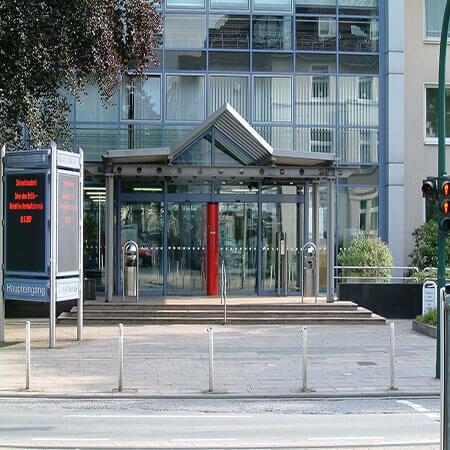
Department of Cardiothoracic Surgery
According to the Focus magazine, the Department of Cardiothoracic Surgery ranks among the top German medical facilities specializing in the surgical treatment of diseases of the cardiovascular system and lung cancer! The department offers the full range of surgical services for the treatment of diseases of the cardiovascular system, respiratory tract, including heart and lung transplantation, artificial heart implantation. The therapeutic options include aortic surgery, coronary artery bypass grafting, transplantation surgery, surgical treatment of heart rhythm disorders (arrhythmias), minimally invasive surgery, surgical treatment of the heart valves, including reconstructive interventions. All operations are performed using state-of-the-art technology and in accordance with the current recommendations of professional societies.
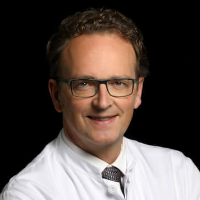




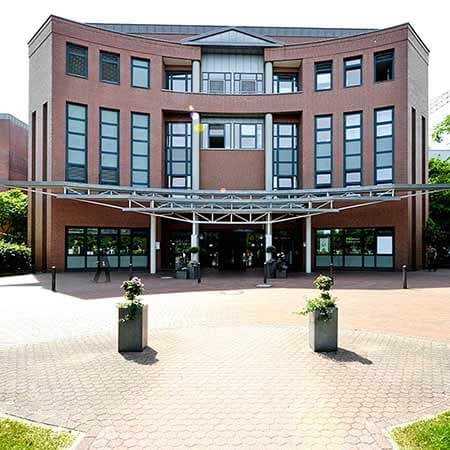
Department of Cardiac Surgery
The Department of Cardiac Surgery provides a full range of surgical treatment in its area of specialization. Special emphasis is placed on heart valve repair and replacement surgery, coronary artery bypass grafting, thoracic aortic surgery, adult congenital and acquired heart disease surgery, pacemaker and defibrillator implantation, and artificial heart implantation for severe heart failure. Many heart operations are performed using minimally invasive techniques, which has a positive effect on the healing of the surgical wound. Minimally invasive cardiac procedures also reduce surgical risks and contribute to a rapid recovery of the patient in the postoperative period. Surgical treatment of cardiac pathologies is performed in advanced operating rooms equipped with the latest technology. The cardiac surgeons of the department successfully perform routine and complex surgical procedures, saving the lives of thousands of patients. The specialists work in accordance with current clinical protocols and follow the recommendations of the German Society for Thoracic and Cardiovascular Surgery (DGTHG).
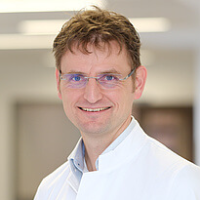

Department of Cardiothoracic Surgery and Vascular Surgery
The Department of Cardiothoracic Surgery and Vascular Surgery provides effective surgical treatment for diseases of the heart, respiratory system, and blood vessels. The team of cardiac surgeons operates on patients with heart valve pathologies, coronary heart disease, heart failure, and heart rhythm disturbances. In the field of thoracic surgery, the key focus is on the surgical removal of lung tumors and lung metastases. The specialists in this area also perform surgery to repair chest wall deformities. In the field of vascular surgery, interventions for abdominal and thoracic aortic aneurysms are most often performed here. The department's vascular surgeons are also exceptionally competent in the treatment of peripheral occlusive arterial disease. A great advantage for the department's patients is that almost all surgical interventions are performed using minimally invasive techniques, so there is no need for a long postoperative recovery. The department's operating rooms are equipped with state-of-the-art technology. This allows for effective and safe treatment. The priority is always personalized medical care for patients.
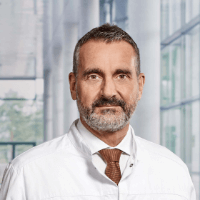





A ventricular septal defect (VSD) is one of the most common congenital heart defects. Less commonly, it is an acquired heart defect that develops in adult patients after myocardial infarction. Surgical closure of a ventricular septal defect is the most common surgical procedure in pediatric cardiac surgery.
Content
Whenever possible, ventricular septal defects are eliminated using a percutaneous method, namely through the blood vessels. If the ventricular septal defect cannot be closed using the endovascular method, in infancy, or in the presence of concomitant heart defects, doctors perform open-heart surgery.
You can seek medical attention at the University Hospital Essen, the University Hospital Oldenburg, or the University Hospital Ulm.
You don't have to worry about arranging your treatment if you make an appointment at a hospital through the Booking Health service. Our specialists will select the most suitable hospital and doctor for you, contact the hospital administration, and make an appointment for your preferred dates. They will book hotel and airline tickets, meet you at an airport abroad, and take you to the hospital by car.
Who may need surgery to treat a ventricular septal defect?
Small ventricular septal defects that do not significantly affect hemodynamics do not require surgical closure. Most of them disappear on their own within 1-2 years.
Large defects that disrupt hemodynamics, cause symptoms, and are unlikely to resolve on their own require ventricular septal defect surgery. Not all patients need open surgery. In some cases, a percutaneous procedure is sufficient, which is performed through an incision in the groin from inside the blood vessels. Doctors deliver an occluder to the heart, which is fixed in the septum and closes the defect. Following such operations, the recovery time for patients is shorter.
Nonetheless, endovascular procedures are risky for infants, so doctors mainly perform surgical repair of ventricular septal defects. In older children, as well as in adults, not all defects are of the appropriate size and location to be closed with a percutaneous method, so doctors often have to resort to open interventions. Open surgery is also done if the ventricular septal defect is combined with other heart defects.
How is VSD surgery performed?
The operation is performed under general anesthesia on an open heart and using a heart-lung machine. Cardiosurgery doctors use a sternotomy as a surgical approach. This surgical procedure involves an incision in the center of the sternum.
The defect closure can be performed with a suturing technique if it is small and with a patch made from autologous tissues (pericardium) or artificial materials.
Sometimes, in addition to VSD surgery, other manipulations on the heart can be performed simultaneously. For example, the closure of an atrial septal defect or a patent foramen ovale, heart valve plastic reconstruction, and patent ductus arteriosus ligation.
You are welcome to use the Booking Health service to get medical care for your VSD abroad. Our website presents the best hospitals with cardiosurgery departments. On our website, you can find out the surgical treatment cost, compare prices at different cardiosurgery departments abroad, and choose a treatment program at the best price. Our specialists will help you choose the most suitable clinics with high success rates for surgical treatment and take care of all the arrangements for your trip.
Authors:
The article was edited by medical experts, board-certified doctors Dr. Nadezhda Ivanisova and Dr. Vadim Zhiliuk. For the treatment of the conditions referred to in the article, you must consult a doctor; the information in the article is not intended for self-medication!
Sources:
European Society of Cardiology

